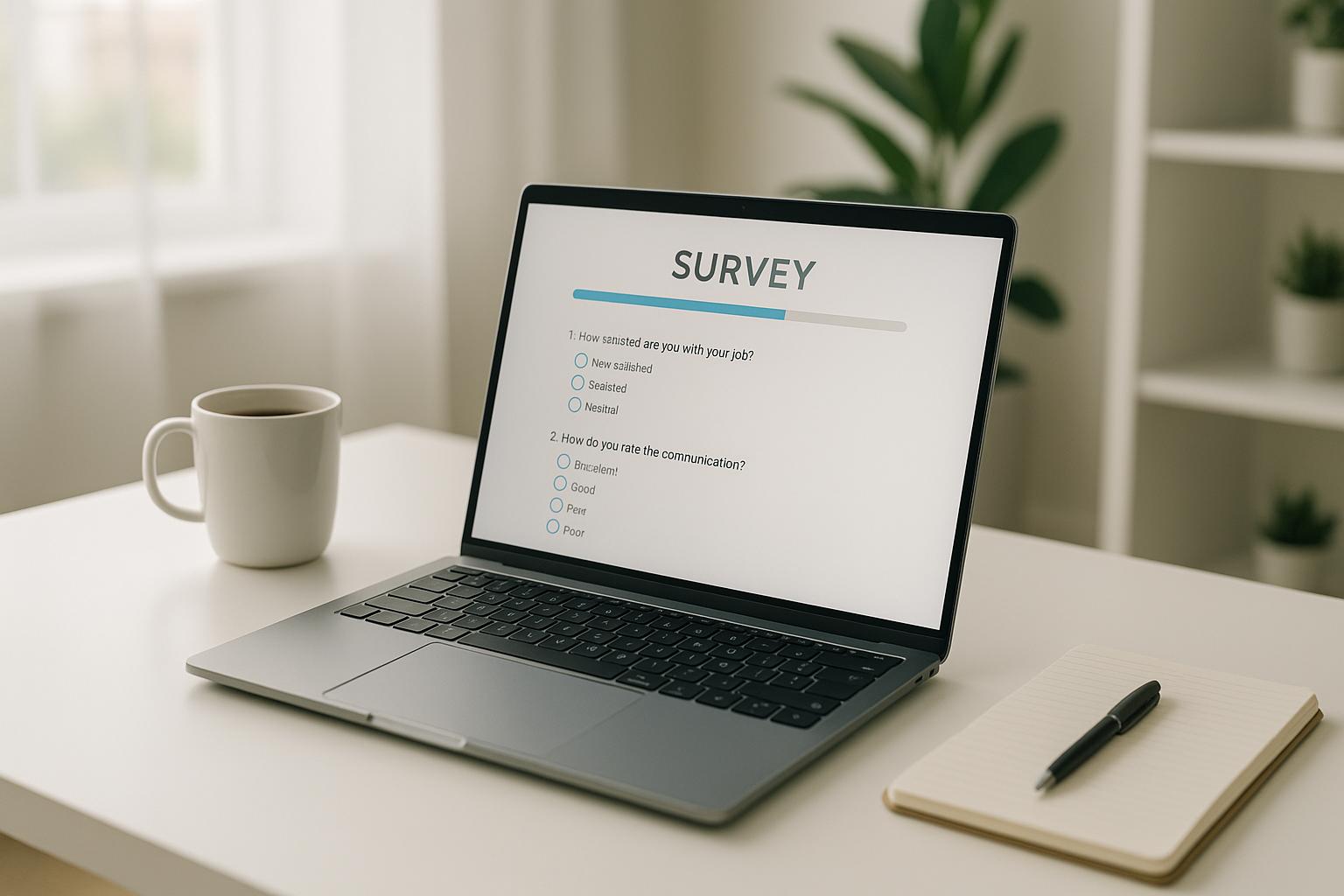Cloud environments are increasingly complex, and cyber threats are evolving rapidly. Businesses operating in hybrid or multi-cloud setups face growing risks, including misconfigurations, identity vulnerabilities, and gaps in security. To combat these challenges, cloud threat intelligence tools provide real-time detection, automated responses, and seamless integration with existing security systems. Below are the top seven tools, each offering distinct features for various organizational needs:
- CrowdStrike Falcon X: Cloud-first platform focusing on endpoint integration and automated malware analysis with compliance support.
- Mandiant Threat Intelligence: Combines automation with expert human analysis, integrating natively with Google Cloud.
- ThreatConnect Intelligence Operations: Promotes team collaboration with machine learning and extensive tool integrations.
- Anomali ThreatStream: Aggregates data from multiple sources, powered by AI for malware analysis and threat hunting.
- Palo Alto Cortex XSOAR: Security orchestration platform with automated playbooks and compliance-friendly workflows.
- SentinelOne Singularity: Autonomous threat detection with AI, offering ransomware rollback and rapid response.
- Wiz: Agentless platform connecting directly to cloud APIs, highlighting attack paths and simplifying compliance.
These tools help organizations detect threats faster, reduce manual effort, and maintain compliance with frameworks like HIPAA, PCI DSS, and SOC 2.
Quick Comparison
| Tool | Key Features | Cloud Support | Pricing Model | Best For |
|---|---|---|---|---|
| CrowdStrike Falcon X | Endpoint integration, automated detection | AWS, Azure, Google Cloud | Per endpoint subscription | Unified endpoint and cloud protection |
| Mandiant | Expert analysis, threat actor tracking | Google Cloud (native), APIs | Custom enterprise licensing | Incident response and compliance reporting |
| ThreatConnect | Team collaboration, 450+ integrations | AWS, Azure, Google Cloud | Usage-based pricing | Analytics and collaborative investigations |
| Anomali ThreatStream | AI-powered aggregation, sandbox analysis | AWS, Azure, Google Cloud | Scales with data volume | Threat hunting and regulatory compliance |
| Palo Alto Cortex XSOAR | Automated playbooks, orchestration | AWS, Azure, Google Cloud | Enterprise licensing | Automation-focused security operations |
| SentinelOne Singularity | AI-driven, ransomware rollback | AWS, Azure, Google Cloud | Per endpoint subscription | Fast-paced environments with minimal effort |
| Wiz | Agentless scanning, compliance automation | AWS, Azure, Google Cloud | Based on cloud assets | Multi-cloud setups and compliance needs |
Key takeaway: Choosing the right tool depends on your organization's cloud setup, security goals, and compliance needs. Test solutions through free trials to ensure they align with your requirements.
Threat Hunting in the Cloud: AI-Driven Tools, Techniques, and Tactics
1. CrowdStrike Falcon X
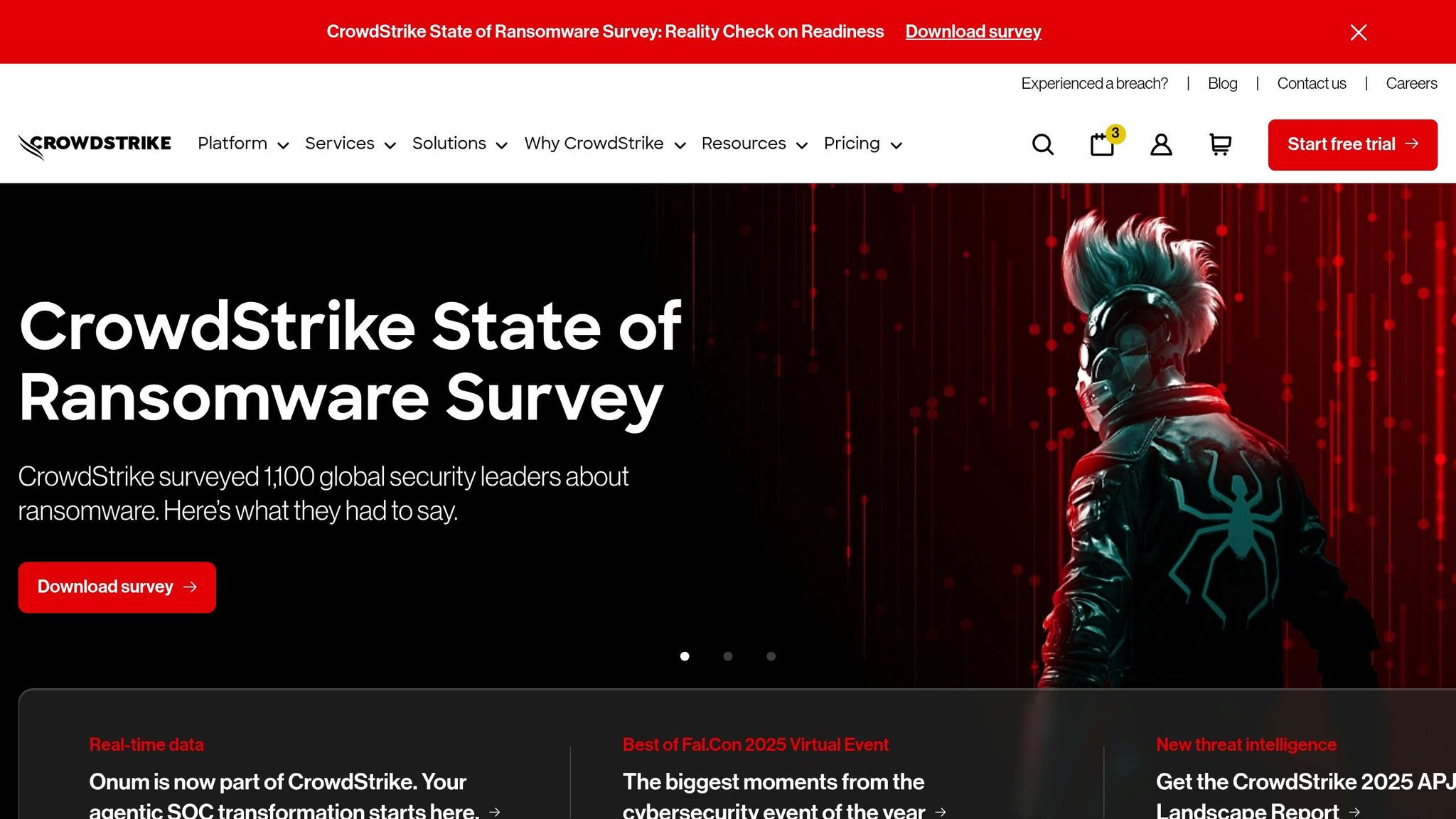
CrowdStrike Falcon X is a cloud-based threat intelligence platform designed to simplify and speed up cybersecurity investigations. Unlike traditional systems that rely on on-premises infrastructure, Falcon X operates entirely in the cloud, delivering threat intelligence directly to endpoints without the need for additional hardware or infrastructure.
This cloud-first approach enables quick deployment and advanced detection capabilities.
Cloud-native design
Falcon X eliminates the hassle of managing on-premises security systems by leveraging a fully cloud-based architecture. This setup allows for rapid deployment and scalability, making it suitable for a wide range of environments. Its lightweight agent is designed to use minimal system resources, ensuring smooth performance across various setups.
Faster detection and response
Falcon X excels in speeding up threat detection through automated malware analysis. Suspicious activities are analyzed in a secure cloud sandbox, where behavioral indicators and threat context are immediately extracted. This process is automated and integrates with CrowdStrike's global threat graph, which processes billions of events to enhance accuracy and minimize false positives. The result? A significant reduction in the time needed for manual investigations.
Seamless integration with cloud platforms
For businesses operating across hybrid and multi-cloud environments, Falcon X integrates effortlessly with the CrowdStrike Falcon Endpoint Protection suite. This ensures consistent visibility and protection for both on-premises and cloud-based workloads.
Supporting compliance and regulations
Falcon X is particularly helpful for U.S. organizations navigating strict compliance requirements. It offers detailed threat actor mapping and custom Indicators of Compromise (IOCs), which aid in meeting regulations like HIPAA, PCI DSS, and CCPA. Its cloud-native design ensures secure data handling and provides comprehensive audit trails - key features for highly regulated industries such as healthcare and finance. Additionally, the platform’s profiling tools map detected threats to known adversary groups, helping organizations better understand potential attackers and their tactics.
2. Mandiant Threat Intelligence
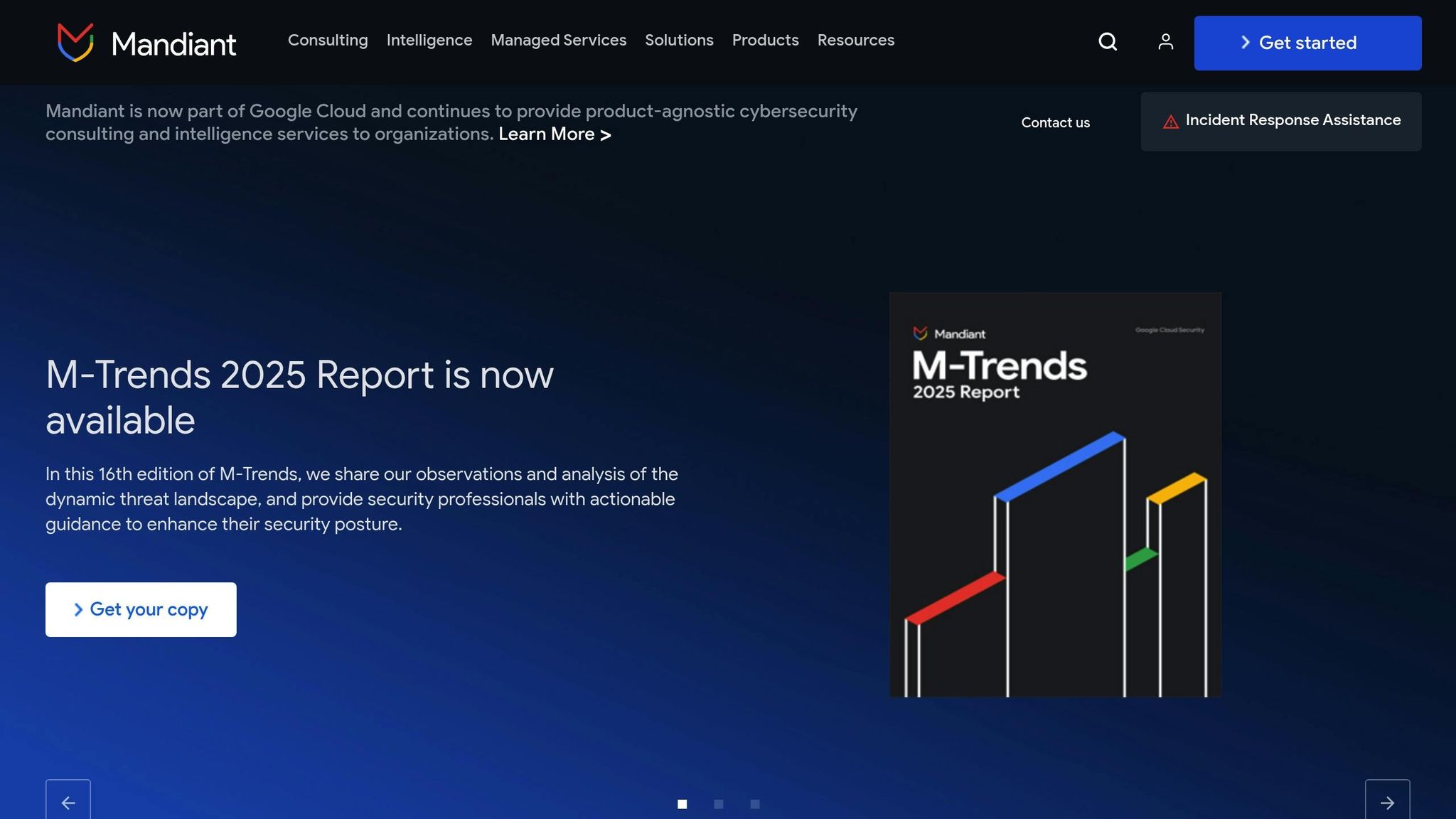
Mandiant Threat Intelligence offers a cloud-based solution that combines advanced threat intelligence with expertise in incident response and seamless integration with Google Cloud Security. The platform monitors over 350 threat actors worldwide through methods like direct investigations, reverse engineering, and behavioral analysis. This makes it a strong option for organizations looking to enhance their cloud security posture with detailed threat insights.
What makes Mandiant stand out is its unique combination of automated analytics and expert human evaluation. Their team doesn’t just rely on automated tools; they conduct in-depth investigations, providing valuable context on the motivations and techniques of threat actors. This dual approach forms the backbone of its advanced capabilities.
Cloud-Native Design
Mandiant was built with the cloud in mind, offering full integration with Google Cloud Security services. This design allows for quick and scalable deployment, ensuring real-time sharing of threat data across cloud environments. Organizations can streamline their intelligence workflows directly within their cloud infrastructure, eliminating the need to juggle multiple security systems.
Faster Threat Detection and Response
By combining automation with expert analysis, Mandiant reduces incident response times by up to 40%. For instance, a financial services company in the U.S. used Mandiant with Google Cloud to not only improve compliance reporting for audits but also speed up the containment of security threats.
Broad Integration Capabilities
While Mandiant works seamlessly with Google Cloud, it also supports integration with other tools like SIEMs and orchestration platforms through APIs. This ensures consistent and reliable threat intelligence across hybrid and multi-cloud environments, making it easier to maintain high-quality data and visibility.
Meeting Compliance and Regulatory Needs
Mandiant’s tools go beyond threat response by supporting compliance with frameworks like HIPAA, PCI DSS, and SOC 2. Tailored assessments help organizations maintain clear audit trails and meet regulatory requirements. The platform also provides detailed reporting and attribution analysis, which are critical for evidence collection and risk assessments. With flexible licensing options, Mandiant aligns with strict U.S. compliance standards, helping organizations not only identify threats but also understand who is behind them and their motives - key insights for both regulatory needs and strategic planning.
3. ThreatConnect Intelligence Operations
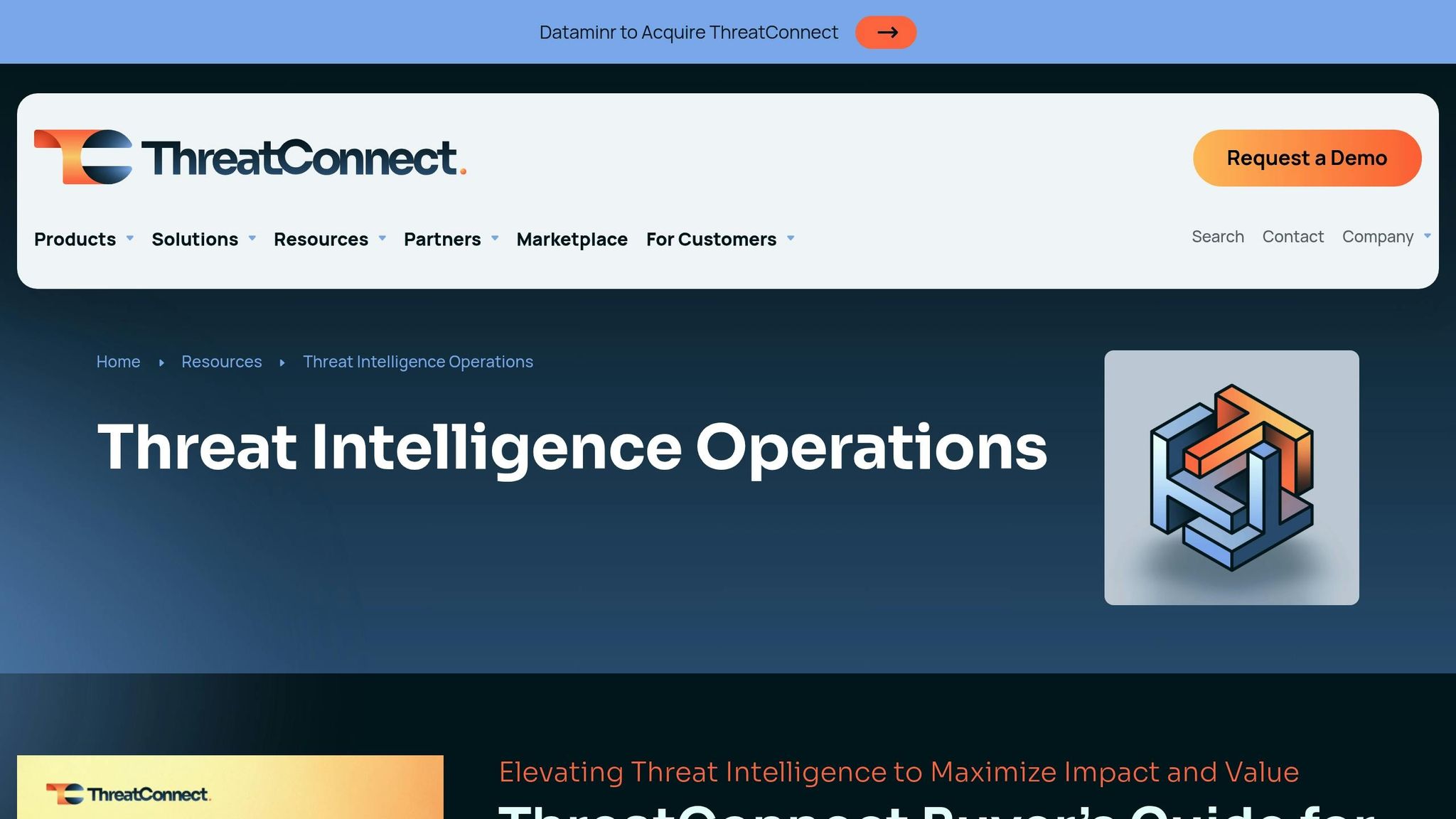
ThreatConnect Intelligence Operations emphasizes teamwork and data sharing, making it easier for security teams to collaborate on cloud threat intelligence. By using its Collective Analytics Layer (CAL) and custom threat data models - enhanced with machine learning and visualization tools - ThreatConnect uncovers patterns that automated detection tools might miss. This enables teams spread across complex cloud environments to work together effectively in responding to threats.
Cloud-Native Capabilities
ThreatConnect provides flexible and scalable tools for managing threat data and conducting collaborative analytics. Its features allow security teams to investigate threats together while ensuring data accuracy and maintaining proper attribution. This setup also integrates smoothly with leading cloud platforms, giving organizations a solid foundation for threat intelligence operations.
Integration with Major Cloud Platforms
One standout feature of ThreatConnect is its ability to integrate with over 450 security tools. This broad compatibility allows organizations to share threat intelligence seamlessly across different systems. For instance, a mid-sized financial services company in the U.S. used ThreatConnect to consolidate threat intelligence from various sources. They integrated it with their existing SIEM and cloud security tools, automating the detection of phishing campaigns while keeping their current infrastructure intact.
Threat Detection and Response Speed
ThreatConnect users report significant improvements in efficiency: up to 50% fewer false positives, 30–40% faster investigations, and a 40% reduction in incident response times. The platform's visualization tools also help analysts map out relationships between threat actors and campaign structures, speeding up the investigation process.
Compliance and Regulatory Support
Whether deployed as SaaS or on-premises, ThreatConnect is designed to meet strict regulatory requirements. It enables secure threat intelligence sharing while maintaining detailed data records, which helps organizations create clear audit trails for compliance purposes. Additionally, businesses can use its custom feed generation capabilities to create threat intelligence feeds tailored to specific industry standards and regulatory demands.
4. Anomali ThreatStream
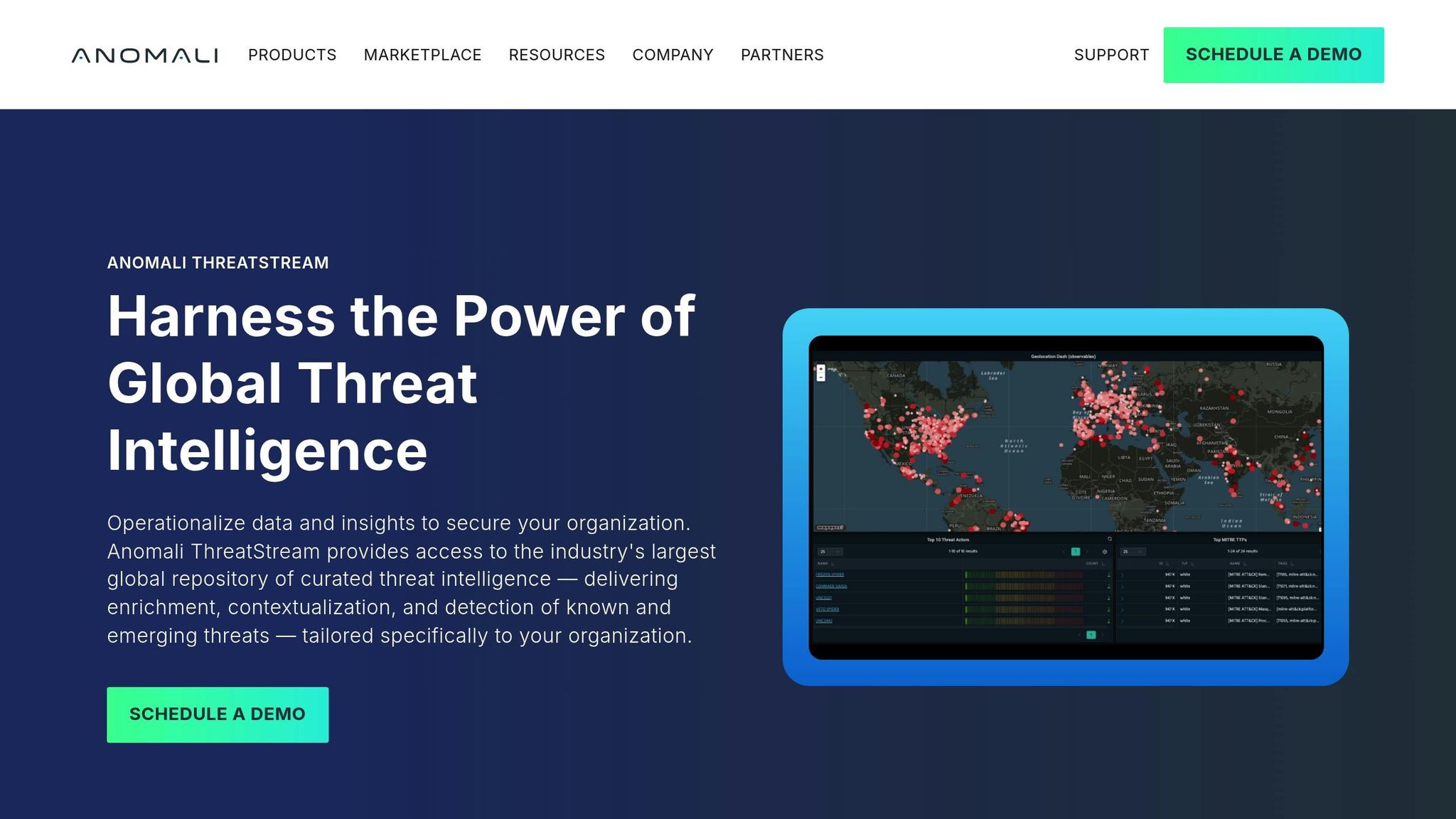
Anomali ThreatStream takes a unique approach to threat intelligence by pulling data from hundreds of sources, including commercial, government, and open-source providers. Using its Macula AI engine, the platform organizes and standardizes all this information, cutting through the noise to help security teams focus on real threats. This streamlined process equips U.S. businesses with a clear view of their threat landscape, even in complex cloud environments.
Cloud-Native Features
ThreatStream offers both SaaS and on-premises deployment options, giving organizations the flexibility to choose what aligns with their operational or regulatory needs. The SaaS option allows for quick setup and automatic updates, while the on-premises model ensures full control over data - an essential feature for companies with strict privacy policies. This flexibility is particularly beneficial for U.S. healthcare organizations navigating HIPAA compliance while managing threat intelligence effectively.
The platform's cloud-based design also supports automatic scaling, adjusting to data volume and analysis needs. Whether you're a small business or a large enterprise working across multiple cloud platforms, ThreatStream can adapt to your operational scale.
Faster Threat Detection and Response
Powered by the Macula AI engine, ThreatStream uses machine learning and natural language processing to automate malware assessments and extract key threat indicators. This reduces false positives and speeds up incident response, saving time for security teams. The sandbox analysis feature further enhances this process by automatically evaluating new malware, giving teams quick insights without requiring manual intervention.
ThreatStream also excels at threat hunting. Its advanced search tools let analysts investigate suspicious activity across both historical and real-time data, making it easier to trace threat patterns across cloud and on-premises systems.
Seamless Integration with Cloud Platforms
ThreatStream integrates with hundreds of security tools via APIs and pre-built connectors, making it compatible with major platforms like Microsoft Azure, AWS, and Google Cloud. It also connects effortlessly with SIEM systems, endpoint detection and response (EDR) tools, and firewall management systems commonly used by U.S. businesses.
This integration allows for automated threat intelligence sharing. For instance, when ThreatStream identifies a new threat, it can automatically update firewall rules, send alerts to SIEM systems, and trigger actions in EDR tools - all without requiring manual input.
Meeting Compliance and Regulatory Needs
ThreatStream's flexible deployment options help organizations meet various U.S. regulatory requirements, including HIPAA, PCI DSS, and SOX compliance. Its ability to normalize data and maintain detailed audit trails ensures that threat intelligence workflows are consistent and traceable, simplifying compliance reporting.
U.S. financial institutions, for example, have successfully used ThreatStream to combine threat feeds from government and commercial sources. This has enabled them to defend against phishing and ransomware attacks while staying within strict regulatory guidelines. The platform's robust reporting and auditing tools make it easier for compliance teams to demonstrate adherence to industry standards during audits.
sbb-itb-d1a6c90
5. Palo Alto Cortex XSOAR
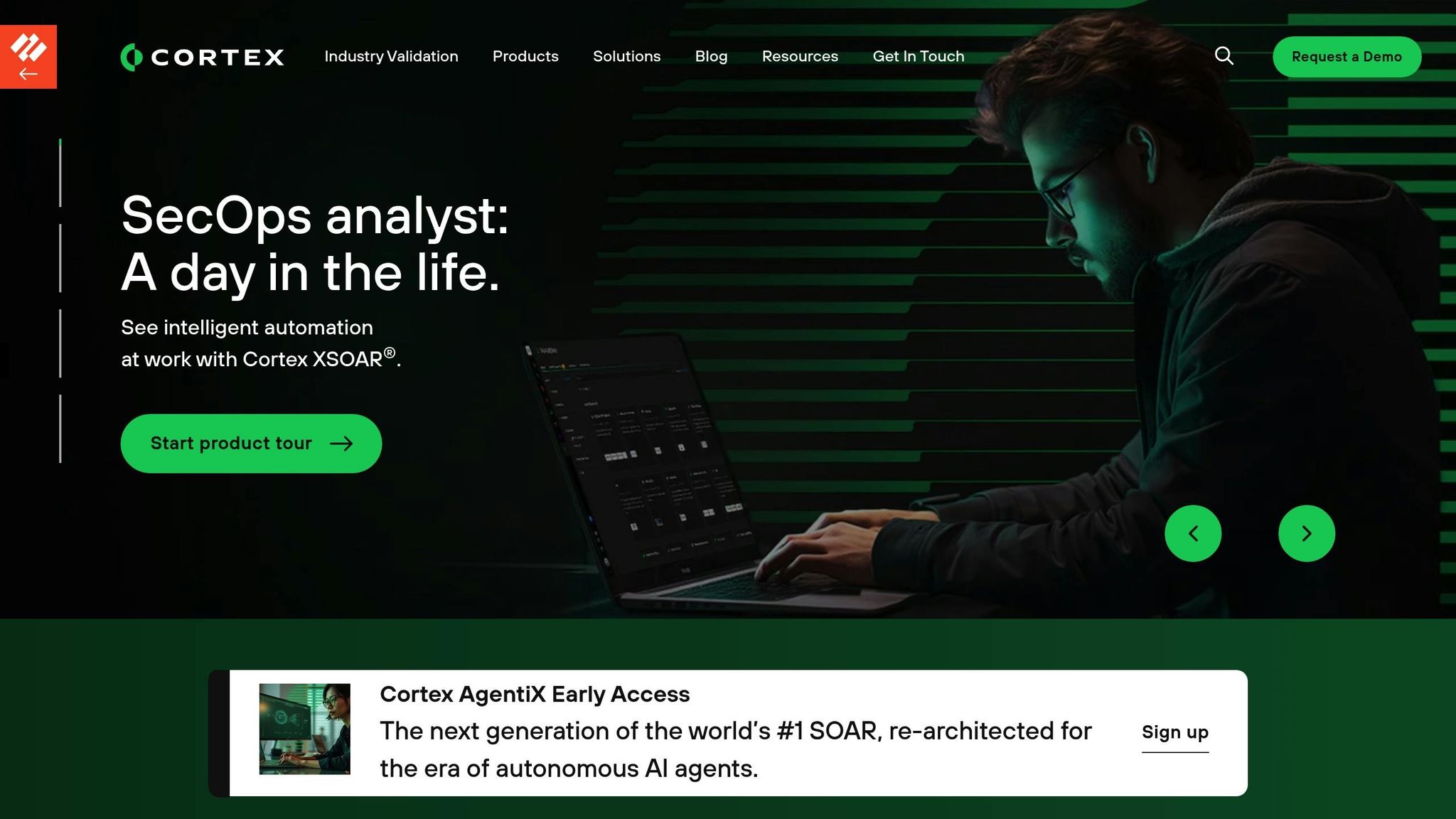
Palo Alto Cortex XSOAR is a security orchestration, automation, and response (SOAR) platform designed to revolutionize how U.S. organizations manage threat intelligence. By blending Unit 42 threat research with automation, it turns raw data into actionable insights. But it doesn’t stop at gathering threat information - it orchestrates your entire security response, seamlessly operating across both cloud and on-premises systems. Its advanced orchestration fits perfectly with the threat intelligence strategies already discussed.
Cloud-Native Features
Cortex XSOAR is built for cloud environments, offering the ability to scale automatically based on the volume of security data and processing demands. Whether deployed in a native cloud setup or a hybrid one, it ensures compliance with regulatory requirements. This adaptability is a game-changer for businesses experiencing rapid growth or seasonal surges, as the platform adjusts without requiring manual tweaks to infrastructure.
With its cloud-native design, the platform eliminates the hassle of managing complex on-premises hardware. This allows security teams to focus on analyzing and responding to threats while the platform handles the backend infrastructure.
Faster Threat Detection and Response
By automating detection and response through playbooks and machine learning, Cortex XSOAR significantly reduces mean time to respond (MTTR) and minimizes manual work. Its machine learning capabilities analyze both historical and real-time threat data, offering playbook recommendations and prioritizing incidents based on their risk and impact. This helps security teams zero in on the most pressing threats, cut down on alert fatigue, and boost overall efficiency. Once a threat is identified, the platform can automatically execute response workflows, update security systems, and document the incident for compliance purposes.
Seamless Integration with Cloud Platforms
Cortex XSOAR connects with hundreds of security tools via APIs and pre-built connectors, enabling unified orchestration across multi-cloud environments. This integration allows businesses to centralize threat intelligence and automate responses across their cloud workloads, ensuring consistent security policies no matter the cloud provider.
It also ensures that updated threat intelligence is automatically shared across all integrated security tools, keeping defenses synchronized.
Supporting Compliance and Regulatory Needs
Cortex XSOAR simplifies compliance by automating tasks like evidence collection, incident documentation, and reporting workflows in alignment with U.S. regulatory standards such as HIPAA, PCI DSS, and SOX. The platform’s customizable playbooks can be tailored to meet specific compliance requirements, generating the necessary documentation and audit trails for regulatory reviews.
For example, a prominent U.S. healthcare provider used Cortex XSOAR to automate threat ingestion and response, cutting manual triage efforts by 60% and speeding up HIPAA compliance reporting.
6. SentinelOne Singularity Platform
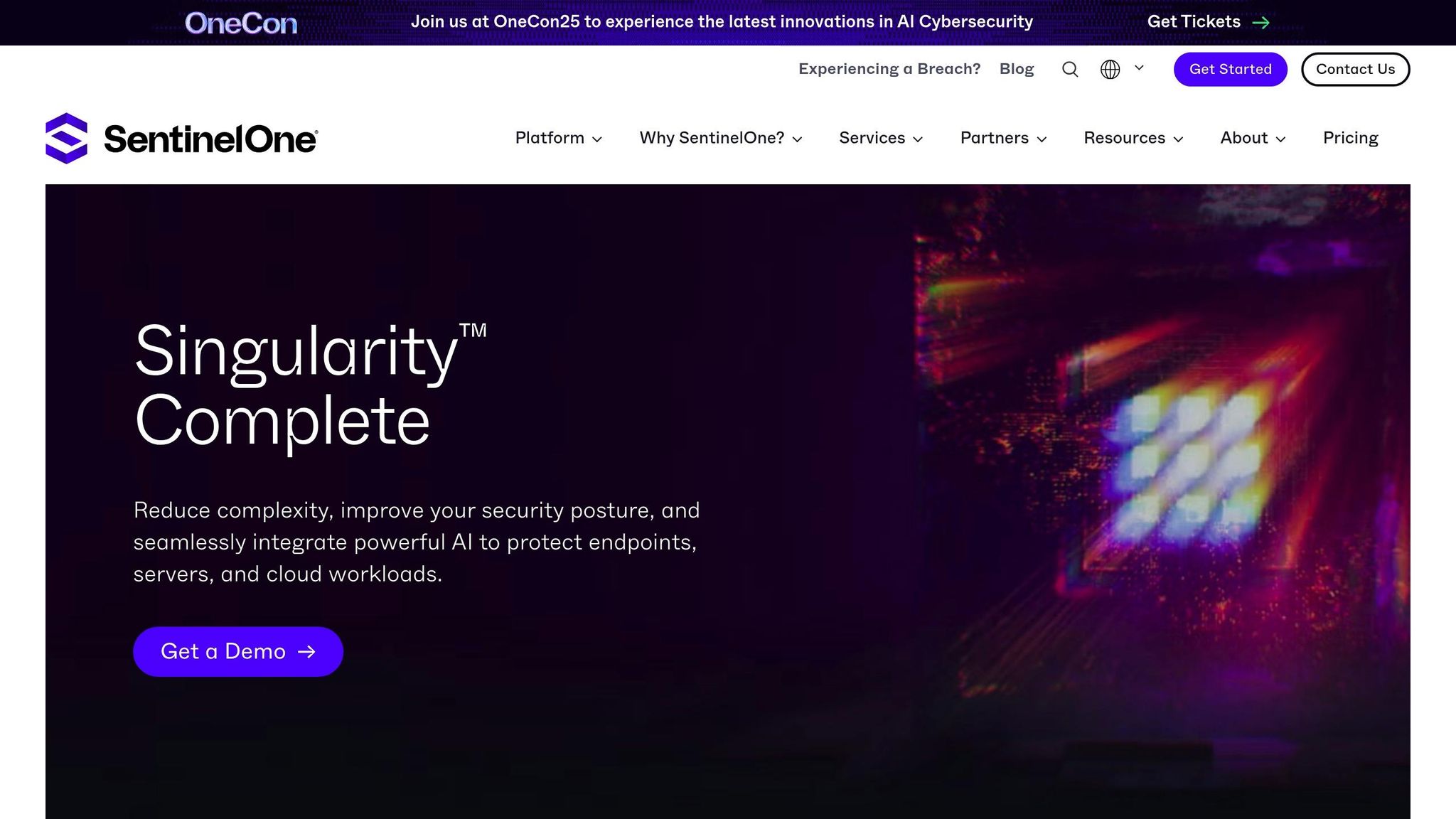
SentinelOne Singularity takes cloud security to the next level by combining automation with AI-powered precision. This platform offers autonomous threat detection and response using advanced behavioral analytics and static AI, removing the need for constant manual monitoring. Its cloud-native design makes it a perfect fit for U.S. multi-cloud and hybrid environments.
Cloud-Native Capabilities
Built specifically for the cloud, SentinelOne is designed to deploy seamlessly, supporting dynamic workloads, containers, and virtual machines with automatic scalability.
It provides OS-level visibility and control across both cloud and on-premises assets, ensuring that security policies remain consistent no matter the environment.
Threat Detection and Response Speed
With autonomous agents monitoring endpoints and workloads around the clock, SentinelOne dramatically reduces the time it takes to detect and respond to threats - often to just seconds or minutes. This rapid response capability helps mitigate ransomware, fileless attacks, and zero-day exploits almost instantly.
A standout feature is its ransomware rollback capability, which allows organizations to restore systems to their pre-attack state without significant data loss. Paired with one-click remediation, this feature minimizes the need for manual intervention and significantly cuts down the mean time to respond (MTTR). This automation frees up security teams to focus on larger strategic goals while the platform handles immediate threats.
Integration with Major Cloud Platforms
SentinelOne integrates seamlessly with AWS, Azure, and Google Cloud, making deployment straightforward. It also automates asset discovery and provides unified visibility across environments.
Thanks to its API-driven architecture, the platform connects easily with existing security tools through pre-built connectors. This creates a centralized hub for managing security, ensuring threat intelligence flows smoothly between systems and keeping all defenses aligned and up-to-date.
Compliance and Regulatory Support
For industries with strict regulations in the U.S., SentinelOne offers support for frameworks like HIPAA, PCI DSS, GDPR, and SOC 2. It provides detailed audit logs, automated reporting, and robust policy enforcement. Pricing for the platform ranges from $6 to $8 per endpoint per month, with discounts available for enterprise-level deployments.
7. Wiz
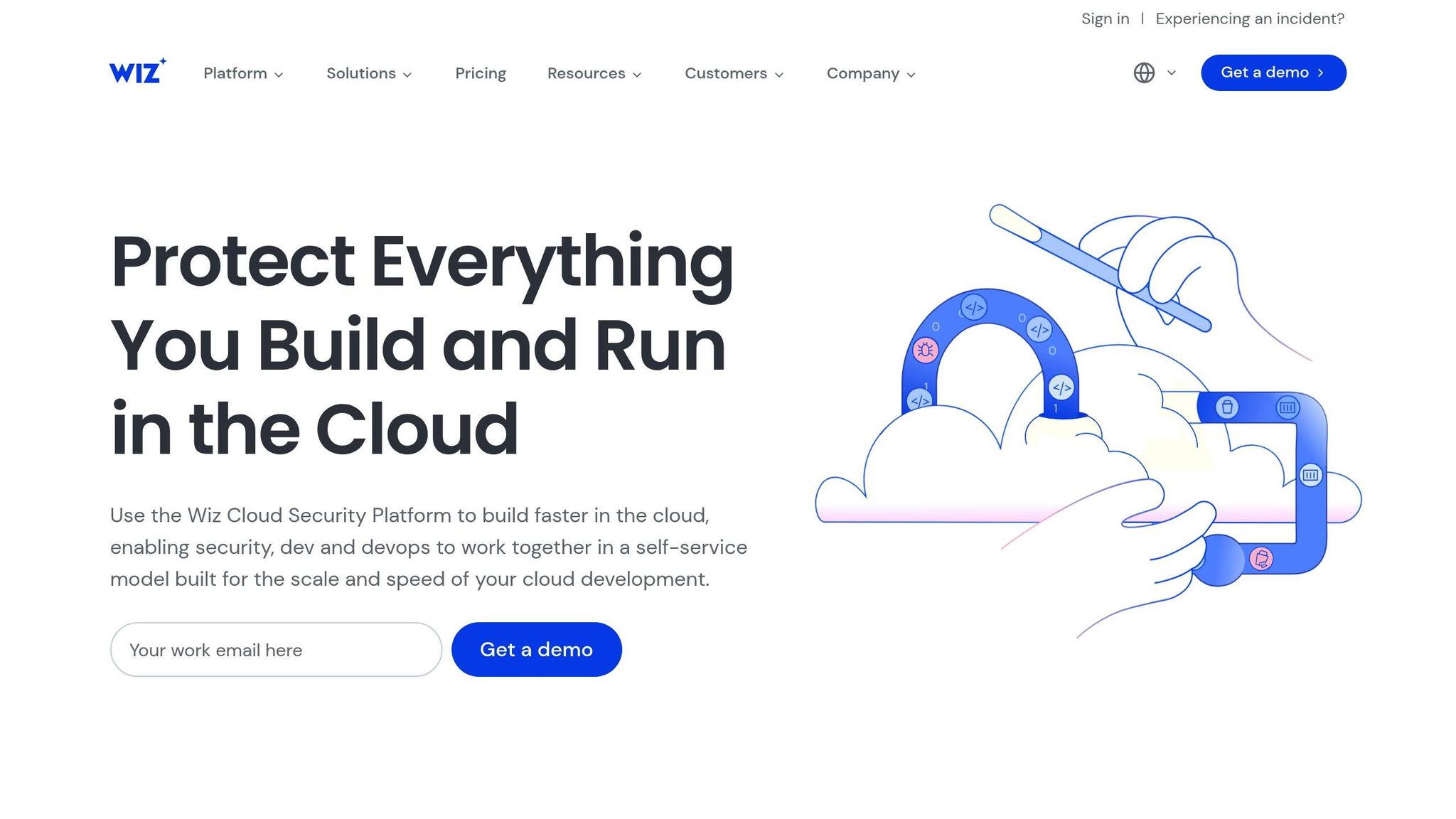
Wiz is a cloud-native security platform designed to simplify how organizations handle threat intelligence in cloud environments. Unlike traditional security tools that rely on complex agent setups, Wiz connects directly to cloud provider APIs. This agentless design ensures broad visibility into your infrastructure without slowing down performance or requiring a lengthy setup process. Its cloud-focused architecture streamlines threat detection and response, making it a go-to choice for modern organizations.
Cloud-Native Features
Wiz takes an agentless approach, directly linking to cloud APIs to scan configurations, workloads, and identities across multi-cloud setups. Its standout feature is its security graph technology, which maps relationships between cloud resources, user identities, and data flows. This gives security teams a clear, actionable view of potential attack paths and vulnerabilities, making it easier to address risks before they escalate.
Faster Threat Detection and Response
Wiz’s agentless framework also boosts real-time threat detection. By combining continuous scanning with contextual risk analysis, it significantly reduces the time it takes to detect and respond to threats (MTTD and MTTR). The platform is adept at identifying issues like misconfigured storage buckets, exposed credentials, vulnerable workloads, and privilege escalation paths. It prioritizes critical vulnerabilities, ensuring teams focus on the most pressing risks. For example, a U.S.-based financial services firm reported a 60% drop in time spent on manual cloud security checks and improved compliance readiness after adopting Wiz.
Seamless Integration with Cloud Providers
Wiz integrates natively with major cloud platforms such as Amazon Web Services (AWS), Microsoft Azure, Google Cloud Platform (GCP), and Oracle Cloud. The setup is quick and painless - usually completed in minutes by granting Wiz read-only API access. This allows organizations to onboard rapidly and maintain consistent risk management across all cloud environments.
Support for Compliance and Regulations
For U.S. businesses navigating strict regulatory requirements, Wiz offers automated compliance tools tailored to frameworks like SOC 2, HIPAA, PCI DSS, and NIST. The platform continuously evaluates cloud resource configurations against these standards, generating detailed compliance reports and pinpointing areas needing attention. This automated process not only ensures ongoing compliance but also reduces the manual workload typically associated with audit preparation.
Wiz’s pricing is customized based on the size of the cloud environment and the assets being protected.
Feature Comparison Table
Here’s a breakdown of various tools based on their core features, cloud compatibility, pricing models, and ideal use cases. The table below provides a quick overview, followed by a deeper dive into their unique strengths and standout qualities.
| Tool | Key Features | Cloud Platform Support | Pricing Model | Best For |
|---|---|---|---|---|
| CrowdStrike Falcon X | Automated investigation, custom IOCs, endpoint integration, real-time monitoring | AWS, Azure, Google Cloud | Subscription per endpoint | Enterprises needing unified endpoint and cloud protection |
| Mandiant Threat Intelligence | Tracks 350+ threat actors, strategic assessments, native Google Cloud integration | Google Cloud (native), multi-cloud via APIs | Custom enterprise licensing | Financial and government organizations requiring advanced incident response |
| ThreatConnect Intelligence Operations | Collaborative analysis, machine learning for threat patterns, 450+ integrations | AWS, Azure, Google Cloud, on-premises | Usage-based custom pricing | Security teams focused on analytics and collaboration |
| Anomali ThreatStream | Multi-source aggregation, AI-powered Macula engine, sandbox analysis | AWS, Azure, Google Cloud, on-premises | Scales with data volume | Businesses prioritizing threat hunting and compliance |
| Palo Alto Cortex XSOAR | Automated playbooks, Unit 42 intelligence, orchestration workflows | AWS, Azure, Google Cloud, on-premises | Enterprise licensing for automation | SOCs prioritizing automated incident response |
| SentinelOne Singularity Platform | Autonomous detection, ransomware rollback, low-touch automation | AWS, Azure, Google Cloud | Subscription per endpoint or user | Fast-moving environments needing minimal manual effort |
| Wiz | Agentless cloud scanning, security graph technology, compliance automation (SOC 2, HIPAA, PCI DSS) | AWS, Azure, Google Cloud | Custom pricing based on cloud assets | Cloud-native businesses and DevOps teams with multi-cloud setups |
Note: Integration capabilities depend on the platform.
Key Differentiators
Each tool carves out its niche through unique features and integration options. Some rely on API-driven connections, while others link directly to cloud APIs. These variations cater to different organizational needs.
Automation and AI are major factors. For instance, Anomali’s Macula AI engine reduces false positives by filtering low-confidence data, while ThreatConnect’s machine learning-based Collective Analytics Layer identifies subtle threat patterns. CrowdStrike and SentinelOne also leverage AI, but SentinelOne emphasizes reducing manual intervention in fast-paced environments.
Deployment flexibility is another critical factor. Tools like ThreatConnect and Anomali ThreatStream offer both cloud and on-premises options, making them suitable for organizations with strict data residency requirements. On the other hand, Wiz is fully cloud-native, connecting directly to cloud APIs without requiring on-premises infrastructure.
For US companies juggling compliance needs, Wiz shines with automated tools for SOC 2, HIPAA, and PCI DSS certifications. Mandiant, meanwhile, excels in attribution analysis, using techniques like malware reverse engineering and geopolitical insights to connect attack campaigns to specific threat groups.
Pricing and Accessibility
Pricing models vary widely. Most vendors provide tailored quotes based on factors like the number of endpoints, data volume, or cloud assets monitored. This approach is particularly suited for cloud-heavy deployments, as opposed to traditional on-premises setups.
For small and medium businesses, tools like BizBot can simplify expense tracking and renewal management across multiple security platforms. This can be a lifesaver for growing companies trying to balance robust security with tight budgets.
Conclusion
As cyberattacks become more advanced, traditional security measures often fall short, making cloud threat intelligence tools an essential part of modern cybersecurity strategies. These tools offer real-time threat detection and automated responses, effectively countering challenges like advanced persistent threats, ransomware, and insider risks within cloud environments.
Choosing the right tool is not a one-size-fits-all process. It requires a clear understanding of your organization’s unique needs. For instance, a small startup using a single-cloud platform will have vastly different requirements compared to a multinational corporation navigating hybrid environments and complex compliance frameworks. Studies show that these tools can cut incident response times by as much as 50%. However, this efficiency is only achievable when the tool aligns perfectly with your operational and security needs.
Organization size and scope play a major role in tool selection. Larger enterprises with distributed systems may benefit from platforms like CrowdStrike Falcon X, known for its advanced analytics and easy deployment. On the other hand, fast-growing startups might lean toward SentinelOne Singularity, which offers autonomous threat detection and reduces the need for hands-on management.
Compliance requirements further shape the decision-making process. Industries subject to regulations such as HIPAA, PCI DSS, or GDPR need tools that provide built-in audit trails and options for data residency. Ensuring compliance is not just about meeting legal obligations but also about maintaining trust and minimizing risk.
Before committing to a solution, take advantage of free trials and proofs of concept. These allow you to test how well the platform integrates with your existing tools, evaluate its threat detection accuracy, and identify any potential gaps. Such testing ensures the chosen tool is both operationally effective and compliant with your industry standards.
For organizations juggling multiple subscriptions and security tools, platforms like BizBot can simplify subscription management. While not a security solution itself, BizBot helps manage costs and resources, making it easier to balance robust security investments with budgetary constraints.
As cybersecurity continues to evolve - with features like AI-driven detection and behavioral analytics becoming standard - cloud threat intelligence tools remain a cornerstone of comprehensive protection. Now is the time to assess your specific needs, from cloud architecture to integration capabilities. Request vendor trials, consult support teams for clarity on deployment and compliance, and choose a solution that strengthens your resilience for the future.
FAQs
How can cloud threat intelligence tools work with existing security systems in hybrid or multi-cloud environments?
Cloud threat intelligence tools are built to work smoothly with your current security systems, even in intricate hybrid or multi-cloud environments. By leveraging APIs, connectors, and automation, these tools share threat data across platforms, improving both visibility and response efficiency.
They add an extra layer to your security setup by offering real-time threat detection, automated alerts, and actionable insights specifically tailored to your cloud infrastructure. This helps create a unified security approach that keeps up with ever-changing threats across all the cloud platforms your business relies on.
What should businesses look for in a cloud threat intelligence tool to ensure it meets compliance requirements?
When choosing a cloud threat intelligence tool, there are a few essentials to keep in mind to ensure it aligns with industry standards and regulatory requirements. First, compatibility with your existing security setup is a must. The tool should integrate smoothly with your current systems to avoid disruptions or gaps in protection.
Next, make sure the tool offers real-time threat monitoring and generates detailed reports. These features are crucial for meeting audit and compliance needs, as they provide the visibility and documentation required to demonstrate adherence to regulations.
It's equally important to confirm the tool supports the specific regulations your industry must follow, such as HIPAA, GDPR, or CCPA. Features like automated compliance checks and customizable alerts can be game-changers, helping you address potential issues before they escalate. Lastly, think about the tool's scalability and ease of use. It should be capable of growing alongside your business while remaining straightforward to operate and manage.
How do cloud threat intelligence tools help automate threat detection and response?
Cloud threat intelligence tools take much of the heavy lifting out of threat detection and response by automating essential processes. These tools gather, analyze, and rank threat data from multiple sources, allowing quicker identification of potential risks. They also work seamlessly with existing security systems, simplifying responses like blocking harmful activities or alerting teams to high-priority threats in real time.
With the help of machine learning and AI-driven analytics, these tools can spot patterns and detect anomalies that manual monitoring might overlook. This not only boosts efficiency but also enables businesses to address threats more proactively, reducing the risk of damage and downtime.
